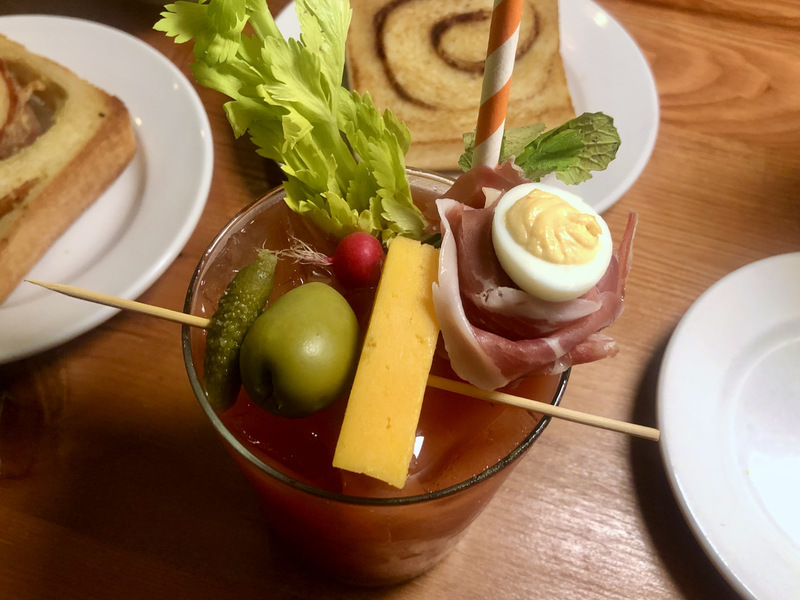Looking for new spots to try? During Dining Month, Lori Fredrich is dishing out must-tries in 20 different dining categories, from brunch to BBQ and everything in between. Here's what she's recommended so far!
What’s a Milwaukee institution? It's nearly always a place that has a long history. It’s a venue where memories have been made (and continue to be made). It’s a spot that’s beloved (and sometimes polarizing), but which adds a certain “je ne sais quoi” to the landscape. It’s a venue which helps to define what Milwaukee was, what it is and what it’s becoming.
Yes, there are absolutely more than four such places in greater Milwaukee. But if you’re looking for a taste of some of the spots that have shaped the city and surrounding area (and keep them around for another 30, 50 or 100 years), considering a visit to any one of these a good place to start.
Kegel's Inn
5901 W. National Ave., (414) 257-9999
kegelsinn.com
[Read more]
If you’ve been to Kegel’s Inn, you likely know that it’s among Milwaukee’s few remaining German staples. Founded in 1924, the restaurant and beer hall is a piece of living history and a well-preserved landmark that offers a snapshot into Cream City History. It also remains a good example of how – with hard work and passion – a longtime family-owned establishment can survive for a century and even more.
Kegel's was founded in 1924 by John T. Kegel and his wife Anna who set up a "soft drink parlor" in a portion of the building which now houses the bar and restaurant. Although Anna Kegel was busted at least once for possession of alcohol, the venue survived until the end of prohibition when the Kegels' expanded the footprint and established it as a bar and restaurant, decorating the interior with murals painted by German artist Peter Gries.
For years, Kegel's Inn was passed through the family until third-generation owners Rob and his brother Jim Kegel decided to put it up for sale. It was largely serendipity that the longtime establishment ended up in the hands of current owners (and fourth-generation Kegels) Julian and Stephanie Kegel, who – despite having other plans for their lives – found themselves enamored of the charms of the space, even though it had fallen into disrepair.
They restored the interior of Kegel's Inn to its former glory and renewed the restaurant's menu, upgrading dishes like beef rouladen, sauerbraten, schnitzels and pork shank with from scratch ingredients and adding modern German dishes like currywurst and spaetzle mac.
They've also worked to keep Kegel's Inn relevant to a new generation by adding a German beer garden and hosting events that celebrate and preserve German history, including an annual dinner with the Muller Fasching Verein Nordamerika.
Want to learn more? Listen as Julian Kegel tells his story in this two-part episode of the FoodCrush podcast.
[Part 1: Julian Kegel on the years before buying Kegel's Inn]
[Part 2: Julian Kegel on taking over the family business]
Real Chili
419 E. Wells St., (414) 271-4042
1625 W. Wells St., (414) 342-6955
realchilimilwaukee.com
[Read more]
If one didn’t know better, they might mistake Real Chili’s offerings as some derivation of the “Cincinnati style”. But no. Real Chili has its roots solidly in Wisconsin and its recipe predates the Ohio-style chili by over two decades.
The first Real Chili opened in Milwaukee in 1931 when Francis Honesh brought the recipe from Chili John’s in Green Bay (established in 1910) and set up shop in the basement of the Jesuit rectory on the Marquette University campus.
Today, there are two locations (both on Wells Street), each sporting a back-to-basics old school diner feel. And if you want to experience exactly how ingrained the history of the fast-casual chili shop is in both Milwaukee and Marquette history, just take a seat and order the off-menu “Marquette Special” (a bowl of medium-spiced chili with spaghetti and beans).
Mader's
1041 N. Dr. Martin Luther King Jr. Dr., (414) 271-3377
madersrestaurant.com
[Read more]
Among the things gradually fading from the Milwaukee landscape is its German cuisine. Losses like the 100-plus year old Karl Ratzsch restaurant speak to changing tastes and values across the city. And yet, amid those changes, stalwarts like Mader's have stood the test of time.
In 1902, Charles Mader spent his life savings on a small building on (what's now) Plankinton Avenue and named it The Comfort. For twenty cents (including tip), a customer could enjoy dinner, which included a large stein of Cream City beer. A few years later, Mader moved the restaurant to 1041 N. Old World Third St. (now Dr. Martin Luther King Jr. Dr.), renaming it Mader’s and launching the restaurant to national fame.
During Prohibition, Mader's shifted its focus from German beer to food. Both locals and tourists flocked to the restaurant to indulge in Mader's wife Celia's sauerkraut balls and spätzle, krautflecken, liver dumpling soup and several types of schnitzel including Count Esterhazy, Black Forest, Ritter and Innsbruck à la Holstein.
A firm believer in the power of advertising, Mader often remarked, “If your business is not worth advertising, advertise it for sale.” And his actions followed suit. In 1929, a short newspaper feature suspiciously resembling an advertorial, claimed that Mader’s had won a reputation for hospitality extending “the length and breadth of this land and to distant lands as well.”
In the 1930s, the Maders remodeled the 3rd Street building so that it more closely resembled a medieval German villa. They added a high-stepped gable and two bas-relief panels depicting costumed servers. Subsequent remodels added a vaulted ceiling decorated with swords and shields and a new dining room.
With the help of his sons George and Gustave, Mader ushered the restaurant through the aftermath of World War II, and its anti-German backlash, by downplaying the German theme. But once the bitterness had subsided, Mader’s again became a haven for German food lovers.
Today, the restaurant is still run by family. Even more, diners who visit to indulge in dishes like liver dumpling soup, spaetzle, potato pancakes and pork shank still sit amid a stunning collection of art, medieval suits of armor and relics dating back to the fourteenth century.
[For more, see Urban Spelunking: Mader's]
Sanford
1547 N. Jackson St., (414) 276-9608
sanfordrestaurant.com
[Read more]
These days it’s tough for a restaurant to make it five years, let alone for more than 30 years. And yet, Milwaukee is home to several restaurants that have not only stood the test of time but remained relevant despite an increasingly challenging landscape. Among them is Sanford, a staple fine dining spot that (quite literally) helped to put Milwaukee on the national dining map. And – even more – it's celebrating its 35th year in business this year.
Founded by Sanford D’Amato in 1989, the former grocery store-turned restaurant has been honored with countless accolades, including a nod as Best New Restaurant by “Esquire” magazine in 1990 and a slot on “Gourmet” magazine’s 50 Best Restaurants list. Even more, in 1996 D’Amato was the first Wisconsin chef to bring home a James Beard Award in the category of Best Chef Midwest.
The restaurant has continued to thrive under the ownership of Chef Justin Aprahamian and his wife Sara, who took the reins at Sanford in 2012. Under their purview, the restaurant has continued to offer top-notch cuisine and service even through the global pandemic when they pivoted to carry-out, allowing customers new and old to enjoy expertly prepared food in the comfort of their own homes.
Over the years, as Milwaukee has become a city recognized for its food scene, James Beard Award-winning chef and co-owner Justin Aprahamian has continued to approach his work with humble fervor, ensuring that Sanford’s ever-changing menu of globally inspired seasonal New American fare has remained relevant and (more importantly) delicious. Meanwhile, under Sara’s guidance, the restaurant’s hospitality has remained as cordial as ever, ensuring that the guest experience is excellent from start to finish.
Thirty-five years after opening – despite national trends that favor more casual dining concepts – the Aprahamians have proven that there is still a place, and an appreciation, for finer dining in the Milwaukee landscape.
As a passionate champion of the local dining scene, Lori has reimagined the restaurant critic's role into that of a trusted dining concierge, guiding food lovers to delightful culinary discoveries and memorable experiences.
Lori is an avid cook whose accrual of condiments and spices is rivaled only by her cookbook collection. Her passion for the culinary industry was birthed while balancing A&W root beer mugs as a teenage carhop, fed by insatiable curiosity and fueled by the people whose stories entwine with every dish. Lori is the author of two books: the "Wisconsin Field to Fork" cookbook and "Milwaukee Food". Her work has garnered journalism awards from entities including the Milwaukee Press Club. In 2024, Lori was honored with a "Top 20 Women in Hospitality to Watch" award by the Wisconsin Restaurant Association.
When she’s not eating, photographing food, writing or planning for TV and radio spots, you’ll find Lori seeking out adventures with her husband Paul, traveling, cooking, reading, learning, snuggling with her cats and looking for ways to make a difference.

.jpeg)





